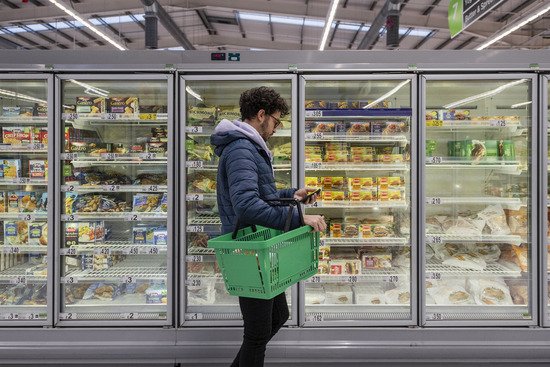Saturday, 17 January 2026
The several food trends are emerging for 2023, according to the International Food Information Council (IFIC)
Wellness will continue to be top-of-mind for many consumers, but it will increasingly come in liquid form, driven in large part by consumers looking for added benefits like energy, mental health and…

Wellness will continue to be top-of-mind for many consumers, but it will increasingly come in liquid form, driven in large part by consumers looking for added benefits like energy, mental health and gut health support.
IFIC’s 2022 Food and Health Survey found that “more energy and less fatigue” were the most sought-after benefit from foods and beverages, with 37% of Americans saying so. You can expect to see options that cater to those wishes multiply, such as “alt caffeine” choices to old standbys like coffee and tea. Along with yerba mate, keep an eye out for more yaupon tea, a lower-caffeine alternative with a sweet flavor profile, which is derived from a species of holly native to the deep South.
Mocktails and nonalcoholic cocktail options continue to take up more and more real estate on menus and grocery store shelves and are especially popular among younger consumers. Perhaps a reaction to the early days of the pandemic (where alcoholic sales and consumption spiked), be prepared to see a growing wave of nonalcoholic options not just during Dry January and Sober October.
While energy was the most sought-after food benefit for all adult population groups, according to the 2022 Food and Health Survey, “emotional/mental health” was among the top three sought out by Gen Z, with more members of the generation desiring this benefit compared to their older counterparts. Among those who made a change to their nutrition or diet in 2022 to manage or reduce their stress, 33% said they consumed foods/beverages that are supposed to reduce stress or the effects of stress, and 24% said they drank less alcohol.
Plant-based alternatives to meat and dairy are old hat, but plant-based pasta, rice and snacks will be a growing trend in 2023. These products point a new lens on sustainability and innovation, often relying on “upcycling,” which takes plant-based food components that ordinarily would have gone to waste and processes them for use in other products—such as pulp and spent grain from soy milk or oat milk being added to flour. Upcycling reduces food waste and contributes to sustainable food production.
The 2020–2025 Dietary Guidelines for Americans shone a light on the importance of diversity and cultural traditions in reaching more of the U.S. population. The United Nations agency UNESCO recently added to its list of “intangible cultural heritage,” new entries which are replete with foods and beverages that are steeped in tradition and ritual. At the same time, food companies are also looking to values like diversity, equity and inclusion as ways to attract the best talent and grow thoughtfully.
Technology
Bringing PFAS testing to the point of need
Jan 16, 2026 | Australia
Study finds Magtein enhances memory, reaction time and heart health markers
Jan 15, 2026 | Company News
Walmart and Google turn AI discovery into effortless shopping experiences
Jan 15, 2026 | Company News
Food Testing
Bringing PFAS testing to the point of need
Jan 16, 2026 | Australia
IMCD opens a Food & Nutrition Laboratory in Cologne
Jan 08, 2026 | Company News
La Trobe University Develops Portable Biosensor to Detect PFAS in Water
Jan 08, 2026 | Australia
More Popular
Amar Pure Gold to invest Rs 250 Cr in Agro-Food Park in Himachal Pradesh
Jan 16, 2026 | Company News
Franke launches new A Line in Southeast Asia and opens regional flagship showroom in Singapore
Jan 16, 2026 | Beverages
EXBERRY plant-based colour supplier GNT earns top sustainability award
Jan 16, 2026 | Awards





